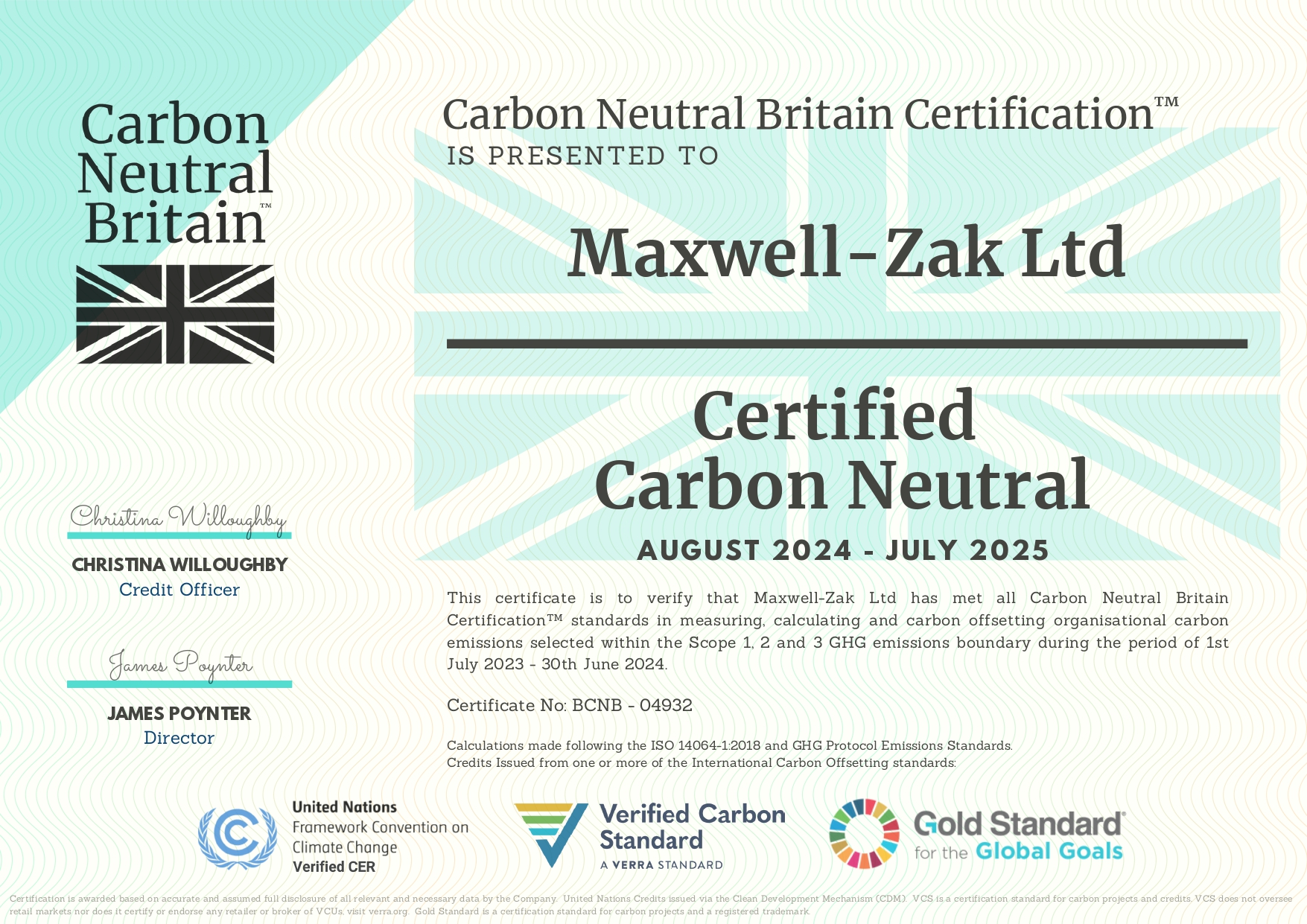
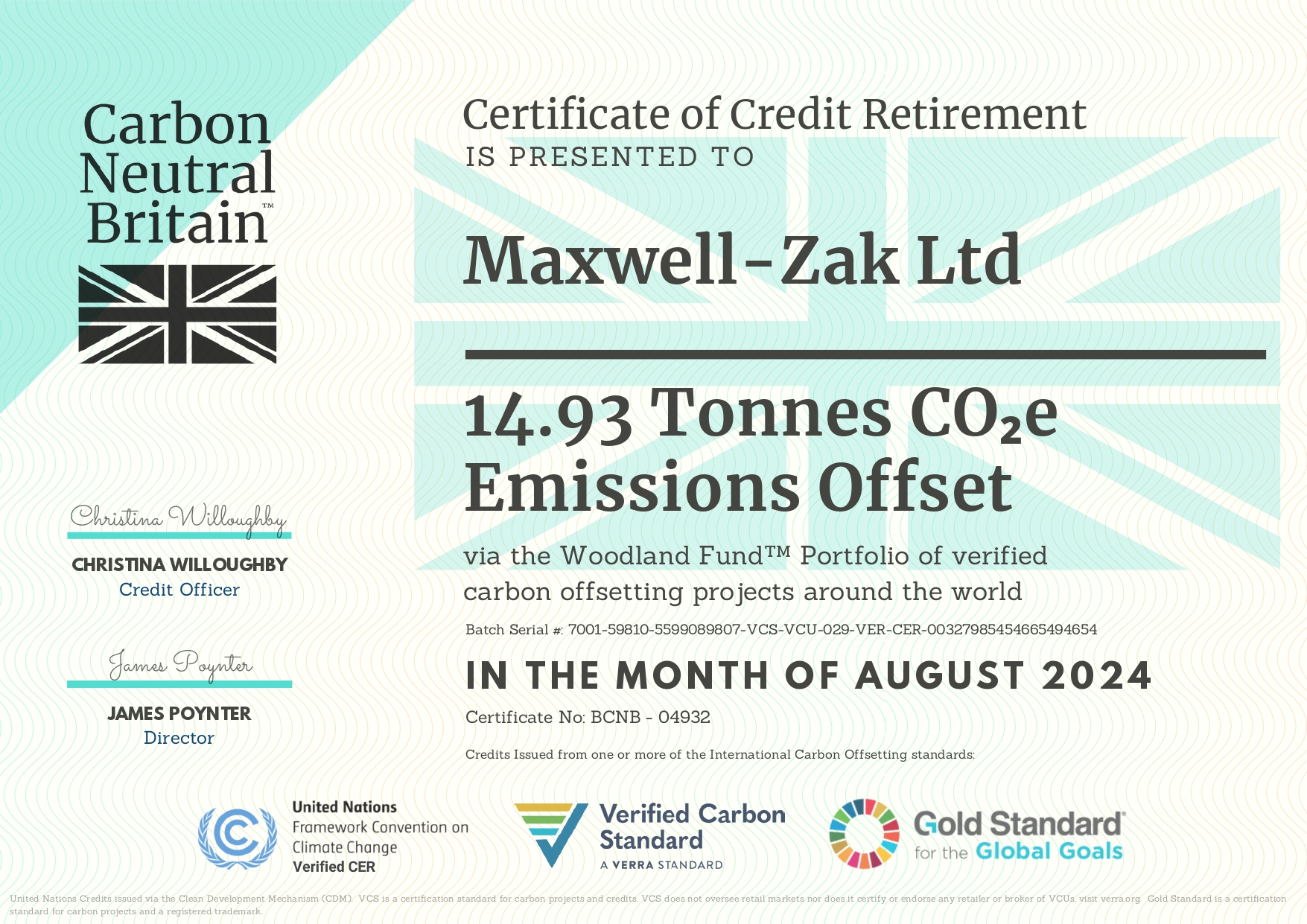
Carbon Neutral Britain™ – Carbon Emissions Report – Maxwell-Zak Ltd
2023/24
1 – Message from Carbon Neutral Britain™
It has never been more important for businesses to step up and take account of the environmental impact associated with their operations.
In the UK, businesses account for over 85% of total GHG emissions – making corporate action the number one priority in helping stop climate change.
Looking to do their part for the environment, Maxwell-Zak Ltd engaged with Carbon Neutral Britain in July 2024, with the ambition to measure and offset the total organisation emissions – to become Carbon Neutral.
As a private GP practice, it was identified that the main emissions were to occur from waste produced within the reporting period.
2 – Carbon Emissions Summary
| Organisation | Maxwell-Zak Ltd |
|---|---|
| Reporting Period | 1st July 2023 – 30th June 2024 |
| Consolidation Approach | Operational Control |
| Base Year | 2023/24 (first year of calculation) |
| Total Emissions | 1.26 Tonnes of Carbon Dioxide Equivalent |
2.1 Emissions Table
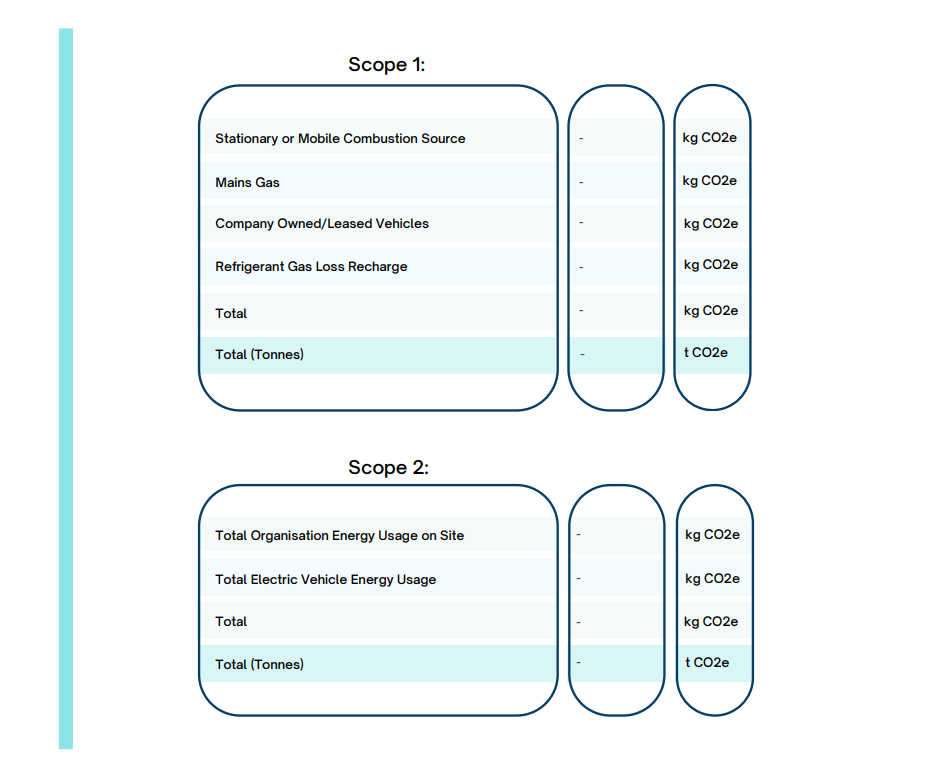
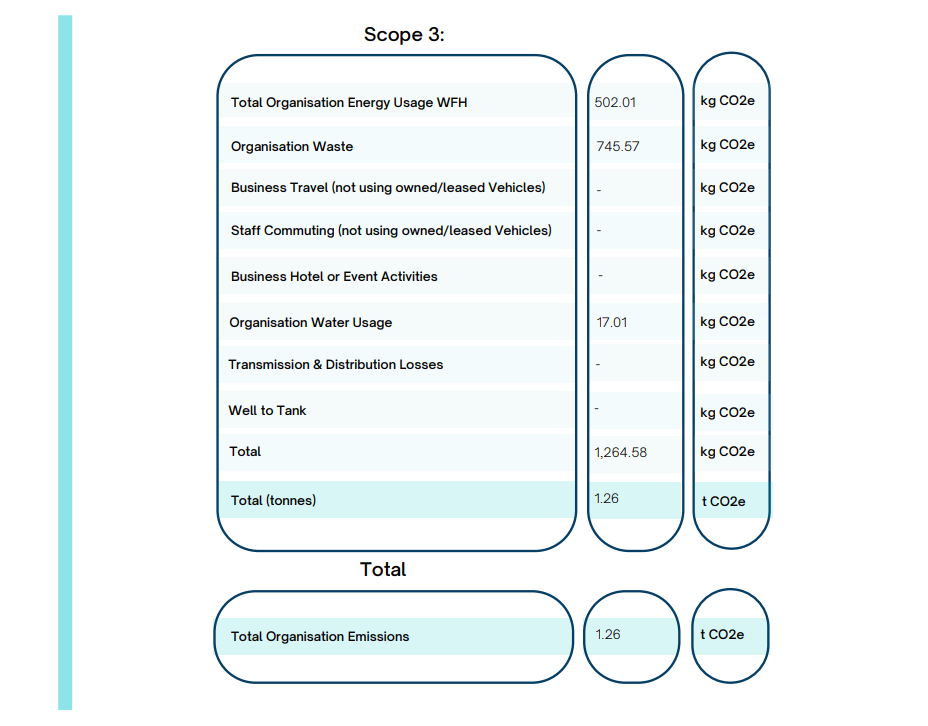
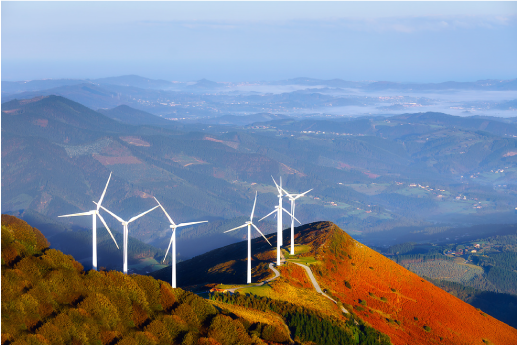
3 – Context

3.1 The purpose of this report
This Carbon Emission Report will measure and calculate the total Greenhouse Gas (GHG) Emissions produced directly and indirectly from the organisations activities. Compulsory for Large Organisations as part of their Streamlined Energy and Carbon Reporting (SECR), HM Government encourages all organisations to take action and measure their emissions on a voluntary basis – as the most effective tool in monitoring and reducing an organisations climate impact.
GHG Emission (also referred to as Carbon Footprint) Calculation, Offsetting and Reducing are now the most popular method for businesses to make an environmental impact as part of their Corporate Social Responsibility policies due to the accurate and measured methodologies, providing complete transparency about their climate impact and resulting actions. Annual emissions reports are regularly used by organisations to track their
progress in achieving emissions reductions across the business over time, and in many cases helps identify areas within the business that produce the most emissions – as an area to focus and improve.
Most importantly of all, carbon emission reports also help identify an organisations total carbon footprint – measured in tonnes of carbon dioxide equivalent (tCO2e), a set unit to ensure carbon offsetting is accurate, and will reverse the organisations environmental impact to achieve carbon neutral status – increasingly important for customers, shareholders, employees and other stakeholders.
3.2 The Kyoto Protocol Greenhouse Gases (GHGs)
Seven Greenhouse Gases are calculated as part this emissions report, known as the seven Kyoto Protocol GHGs. These gasses occur the most often as a result of business activities, with the highest Global Warming Potential. For the purposes of emissions reporting, these gases are simplified and measured in the unit of tonnes of carbon dioxide equivalent (tCO₂e). The Global Warming Potential (GWP) of these gases are not the same however, which creates the unit equivalence compared to carbon dioxide over a period of 100 years (shown below). The latest AR5 values have been used
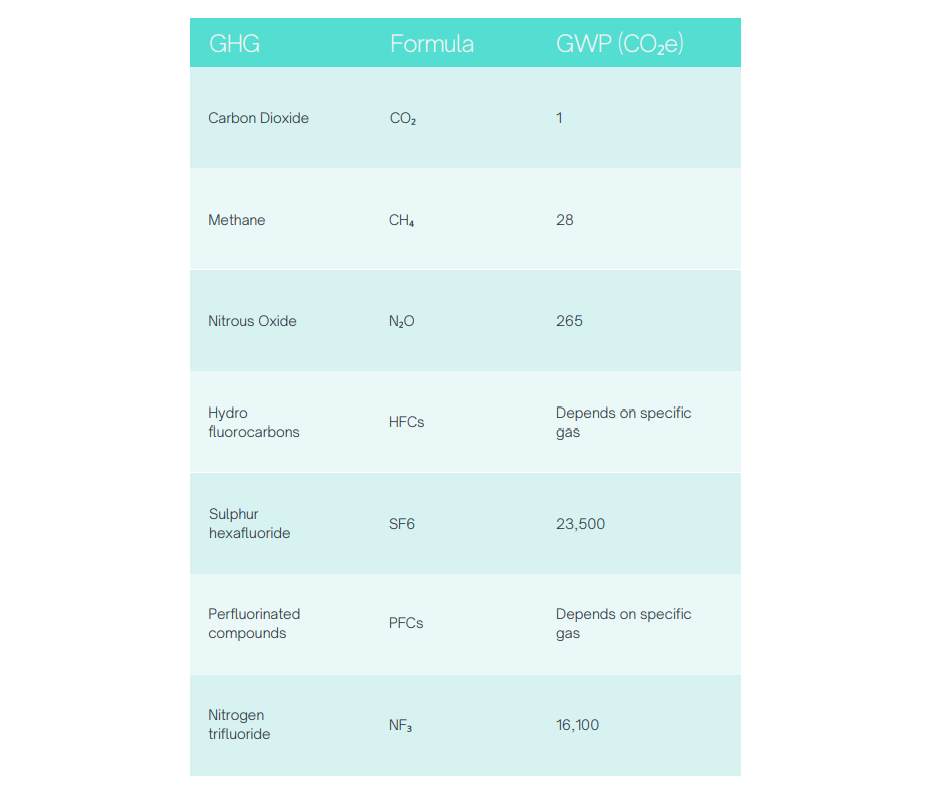
3.3 Calculating Emissions & Emissions Factors
The emissions calculations have been made using client-supplied activity data, with assumed full disclosure of all relevant and necessary information. The data received (such as energy usage in Kwh, or vehicle mileage) are then multiplied by the relevant emissions factors from published and reputable sources. Depending on the needs of the organisation the emissions factors used in some cases are scientific research journals or independent studies, but in most cases are from HM Government publications. Most commonly used – UK Government Conversion Factors for Company Reporting (Year: 2023, Expiry: 10/06/2024, Version 1.1) – DBEIS / DEFRA). Any assumptions or estimations of relevant data are published within this report.
3.4 Reporting Standards
GHG emissions reports are most widely carried out in accordance with the ISO 14064:1-2018 and GHG Emissions Protocol Accounting and Reporting Standards, whose methodologies have been used in the creation of this report.
The International Organisation of Standardisation (ISO) created the ISO 14064 standard in 2006, updating in 2018 to specify the principles and requirements at the organisational level for the quantification and reporting of greenhouse gas (GHG) emissions and removals. It includes requirements for the design, development, management, reporting and verification of an organization’s GHG inventory.
The “Greenhouse Gas Protocol – Corporate Accounting and Reporting Standard” (GHG Protocol, 2011) developed in a partnership of the World Business Council for Sustainable Development (WBCSD) and the World Resource Institute (WRI) follow a similar methodology mirroring those of the ISO standard.
Using the two most widely recognised and used emission standards in the world, ensure all measurements, calculations and subsequent offsetting are completed to the most regulated and accurate standards possible.
Using the ISO 14064 and GHG Emissions Protocol Standards, business emissions are
identified using three scopes of emissions:
3.5 Radiative Forcing
Radiative forcing (RF) is a measure of the additional environmental impact of aviation.These include emissions of nitrous oxides and water vapour when emitted at high altitude.
HM Government guidance recommends organisations should include the influence of radiative forcing RF in air travel emissions to capture the maximum climate impact of their travel habits. As such, radiative forcing has been included within the emission factor calculations of air travel within this report and future reports, where applicable.
3.6 Quality and Accuracy
The accuracy of a GHG assessment is directly related to the quality of the activity data provided, and for this assessment and report, ‘primary data’ (such as electrical usage in Kwh for the reporting period), have been used wherever possible. ‘Secondary data’ in the form of estimates, extrapolations and/or industry averages has been used when primary data is not available – to provide as accurate estimates of emissions as possible.
In addition, this report has been completing following the WRI GHG Protocol principles of relevance, completeness, consistency, transparency and accuracy.
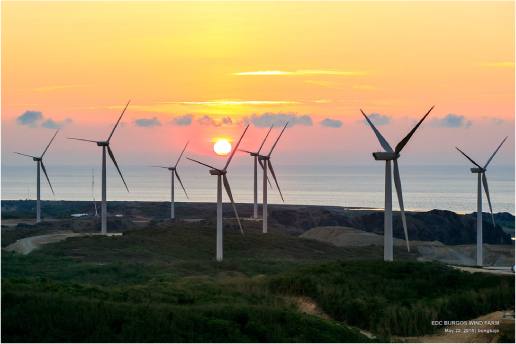
4 – Methodology

4.1 Business Introduction
Carbon Neutral Britain was engaged by Maxwell-Zak Ltd in order to measure and calculate the organisation’s total carbon footprint for 2023/24, with the purpose of offsetting their total organisation emissions – to become Carbon Neutral.
As a private GP practice, it was identified that the main emissions were to occur from waste produced within the reporting period.
4.2 Operational Boundary and Data
Using the operational control consolidation approach was determined as the best method for Maxwell-Zak Ltd, due to the standard business structure and business practices. As a result, the following scope of data was collected.
Scope 1 – Stationary and Mobile Source Emissions (equipment and quantity combusted),Company Owned and Leased Vehicles (vehicle type and distance travelled), Refrigerant Gas Losses (refrigerant type and new/disposed units) for the organisation only.
Scope 2 – Energy (electricity, imported heat, steam in kwh) from the office and vehicles, using the location based method.
Scope 3 – Homeworking Energy (Days), Water (consumption and waste volume), Waste (landfill, recycled and composted weight), Business Travel (type and distance), Staff Commuting (average distance and type), Hotel Stays (UK, Europe or Worldwide days), Inbound/Outbound delivery (weight/volume, type and source), Transmission and Distribution losses associated with electricity usage (kwh) and Well To Tank emissions from combustion fuels (volume combusted).
4.3 Assumptions and Estimations
Where primary emissions data could not be collected, the following assumptions and estimations were used:
- Vehicle emissions were calculated using Defra vehicle categories and HM Government Emission Factors (2023).
- Throughout the reporting period, some staff worked remotely from home. Due to the unknown primary energy data from staff at home, the energy usage was calculated
based on the number of days staff worked, assuming 8 hours per day. - Water consumption figures were estimated for the organisation.
- Waste figures were estimated based on staff days within the organisation.
- Transmission and distribution losses associated with electricity usage, as well as ‘well to tank’ emissions from combustion fuels were included in the assessment.
- Any incidental emissions less than 1% from the sources measured were not included within this report.

5 – Results
5.1 Summary
Maxwell-Zak Ltd
Carbon (GHG) Emissions
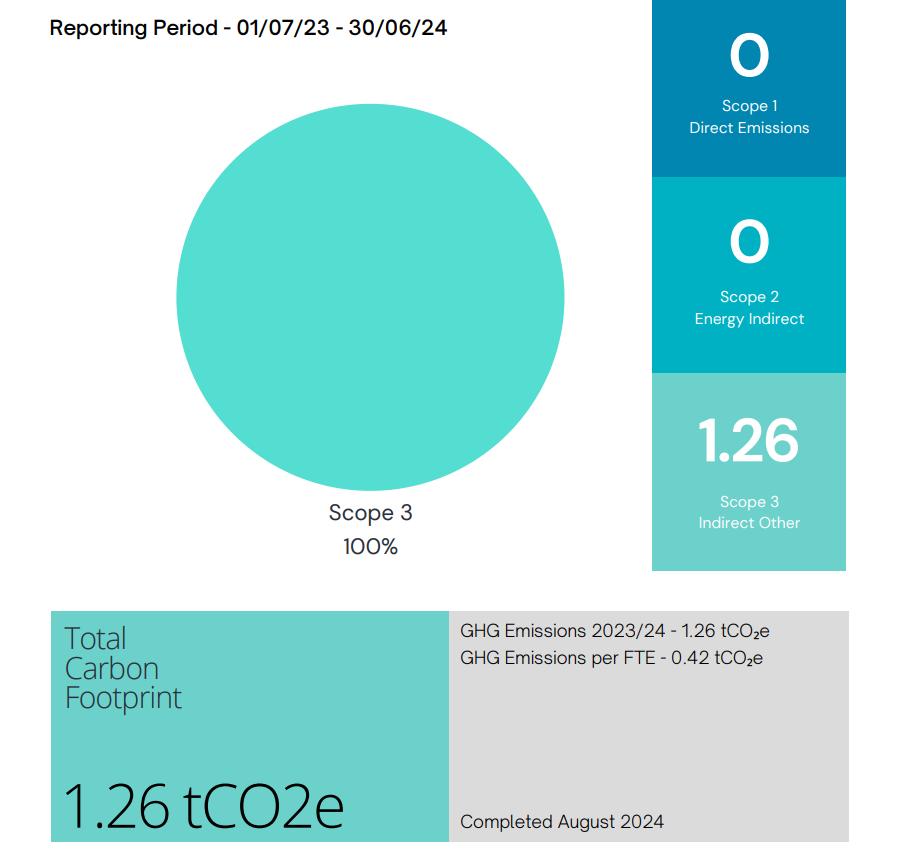
5.2 Emissions by Scope
0
Scope 1
Direct Emissions
Scope 1 emissions were zero, due to no company owned/leased vehicles, and/or combustion sources during the reporting period.
0
Scope 2
Energy Indirect
Scope 2 emissions were zero, due to no company owned/leased electric vehicles, and/or company office.
1.26
Scope 3
Indirect Other
The main Scope 3 emissions occurred from waste. Other emissions occurred from the energy consumption from staff working at home (these emissions were attributed ‘additional’ energy consumption that would not have otherwise occurred at home) and water usage.

6 – Carbon Neutral Certification
6.1 Carbon Neutral Status
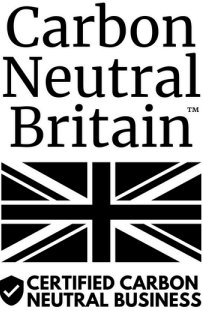
In August 2024, Maxwell-Zak Ltd offset their carbon footprint to become certified as a Carbon Neutral Business by Carbon Neutral Britain.
As certification awarded by an external organisation, it provides assurance that the carbon neutral claim is robust and credible, following calculation using the ISO 14064 and GHG Protocol Emissions Standard principles of relevance, completeness, consistency, transparency and accuracy.
Carbon Neutral Status has been awarded to the organisation for a period of 12 months.
It is recommended the organisation completes an annual calculation of its environmental impact and emissions in 2024, to further monitor and evaluate emissions changes after implementing reduction strategies, in addition to offsetting and maintaining carbon neutral status.

6.2 Carbon Offsetting Projects
Through the Carbon Neutral Britain Climate Fund™, Maxwell-Zak Ltd has offset its total carbon emissions through internationally certified carbon offsetting projects.
Certified via the Verra – Verified Carbon Standard (VCS), the Gold Standard – Voluntary Emission Reductions (VER) or the United Nations – Certified Emission Reductions (CER) programmes, the projects have also been selected based on their direct and indirect impact around the world – not just in offsetting, but also in supporting education, employment and clean water, as well as having net positive impact on the local wildlife and ecology.
As the three largest, and most regulated voluntary offsetting standards used by organisations and even countries in their emissions reductions – all measurements and tonnes of CO₂e offset are accurate, and verified.
An example of projects supported include:

Project 2151: Household Solar Lighting in Zambia

Project 2112: Wind Power in Karnataka

Project 2256: Elazig Solar Farm in Turkey

Project 1165: Salkhit Wind Farm in Mongolia
7 – Carbon Reduction Plan (CRP)
7.1 Reduction Overview
IPCC studies (and COP discussions) have highlighted the importance of businesses making a difference in the next 5 years before changes to the climate are irreversible, and by Carbon Offsetting and becoming Carbon Neutral, Maxwell-Zak Ltd is proactively doing its part for the planet now – when it is the most important.
In addition to Carbon Offsetting and Carbon Neutral status – it is recommended that Maxwell-Zak Ltd takes further action to reduce its future emissions – as much as practically possible. By reducing all avoidable emissions to zero – the organisation will achieve Net Zero status.
7.2 Science Based Targets
As part of the 2015 Paris Agreement, world governments committed to curbing global temperature rise to well-below 2°C above pre-industrial levels, and pursuing efforts to limit warming to 1.5°C. In 2018, the IPCC warned that global warming must not exceed 1.5°C to avoid the catastrophic impacts of climate change.
It was agreed that to achieve this, GHG emissions must halve by 2030 – and drop to Net Zero by 2050. In order to align with these Science Based Targets – Maxwell-Zak Ltd must commit to reducing half of its GHG emissions by 2030, and to achieve Net Zero by 2050.

7.3 Procurement Policy Note 06/21
The UK Government amended the Climate Change Act 2008 in 2019 by introducing a target of at least a 100% reduction in the net UK carbon account (i.e. reduction of greenhouse gas emissions, compared to 1990 levels) by 2050. This is otherwise known as the ‘Net Zero’ target.
To aid in this target, UK suppliers to government contracts are required to meet the requirements of Procurement Policy Note (PPN) 06/21, by providing a Net Zero Carbon Reduction Plan.
In addition to calculating Scope 1, 2 and a subset of Scope 3 emissions in tCO2e for the six greenhouse gases covered by the Kyoto Protocol (as outlined in this report), MaxwellZak Ltd is required to make a commitment to achieving net zero by 2050, outline its reduction plans, and publish its Carbon Reduction Plan (CRP) on its website.

7.4 Reduction Target Plan
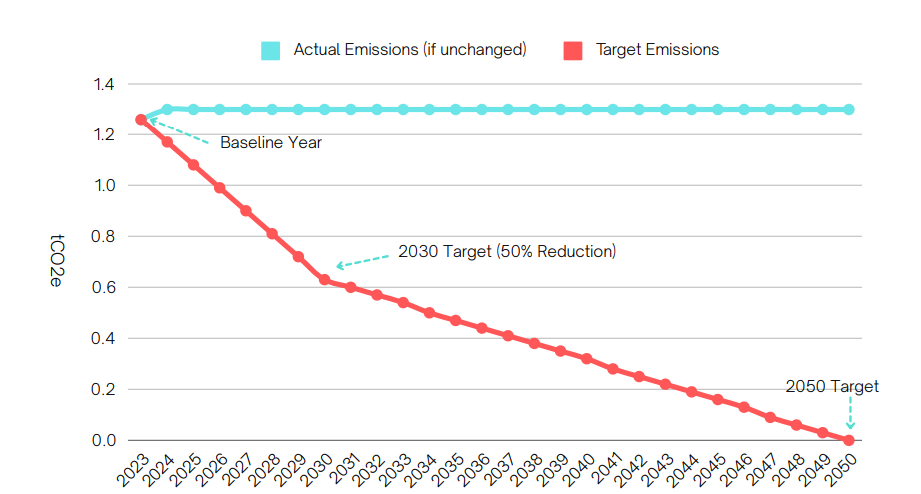
In order to achieve a 50% reduction in emissions by 2030, Maxwell-Zak Ltd is required to reduce its emissions by 0.63 tCO2e from the ‘Baseline’ (first year) assessment by 2030.
This will require a reduction of 7.14% (0.09 tCO2e) per year from the ‘Baseline’ (first year) assessment of the organisation. A further reduction of 2.5% (0.03 tCO2e) each year is then required in order to achieve Net Zero.
Should significant changes to the business size and structure occur in the future – Carbon Neutral Britain will amend the ‘baseline’ assessment year, as well as look at intensity values (tCO2e per million turnover, FTE or other metric), to further track and implement reduction strategies.
7.5 Reduction Strategies

Although some emission reductions will require technological and third party improvements, it is recommended that Maxwell-Zak Ltd targets the largest avoidable emission source of the organisation, in order to make the most impactful, and quickest reduction in emissions possible. The largest avoidable emission source is:
Recommendations for the organisation are as follows:
Waste
Landfill waste produces the highest volume of carbon emissions, and so should be avoided wherever possible. ‘Zero to landfill’ solutions are increasingly available for businesses of all sizes, and by doing so, a significant reduction can be achieved. Reviewing packaging/goods used and efficiency of material use is also recommended to reduce the initial production of waste.
8 – Contact

2024
The Year to Make a
Difference
Help Support Climate Action
© Carbon Neutral Britain LTD 2024
Whilst care has been used in processing, analysing and developing this document, Carbon Neutral Britain Ltd gives no warranty that the information supplied is free from error. Carbon Neutral Britain Ltd shall not be liable for any loss suffered through the use, directly or indirectly, of any information, product or service based on any part of this report.
This report is not intended to be a comprehensive review of the practices of the named recipient nor the viability of its products or services. It is the responsibility of the named recipient to ensure that all its products or services adhere to and are compliant with all applicable laws, regulations and other generally accepted standards of quality and performance.
Calculations have been made based on accurate and assumed full disclosure of all relevant and necessary data by the named recipient, and has not verified the validity, accuracy or comprehensiveness of any information supplied to Carbon Neutral Britain Ltd in the provision of this report.
Carbon Neutral Britain Ltd does not accept any responsibility whether in contract, tort, equity or otherwise for any action taken, or reliance placed on it, or for any error or omission from this report.

